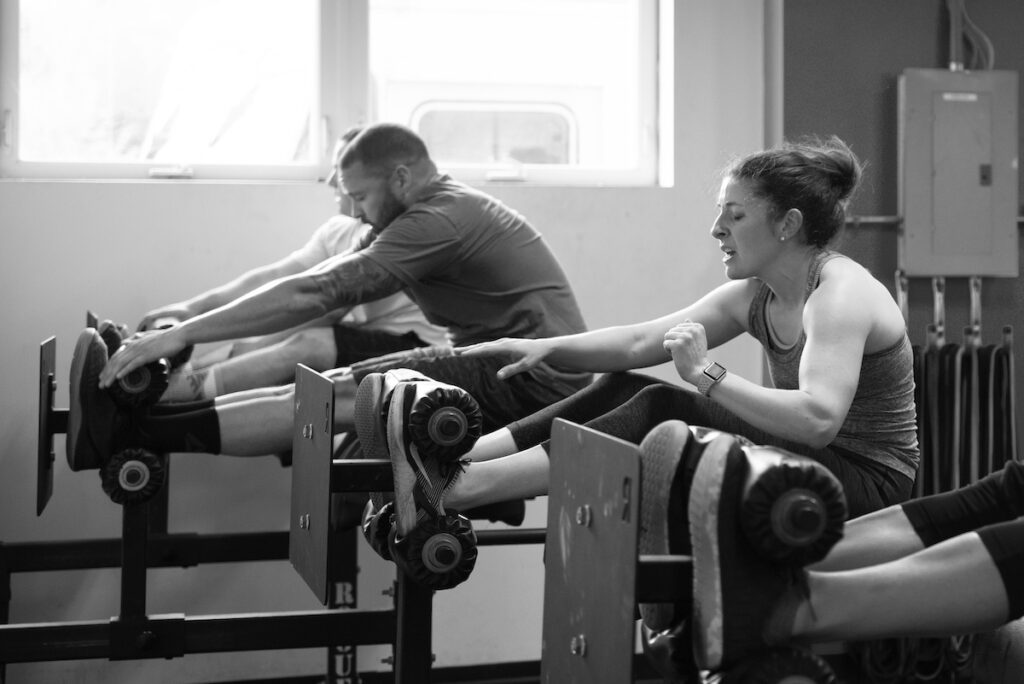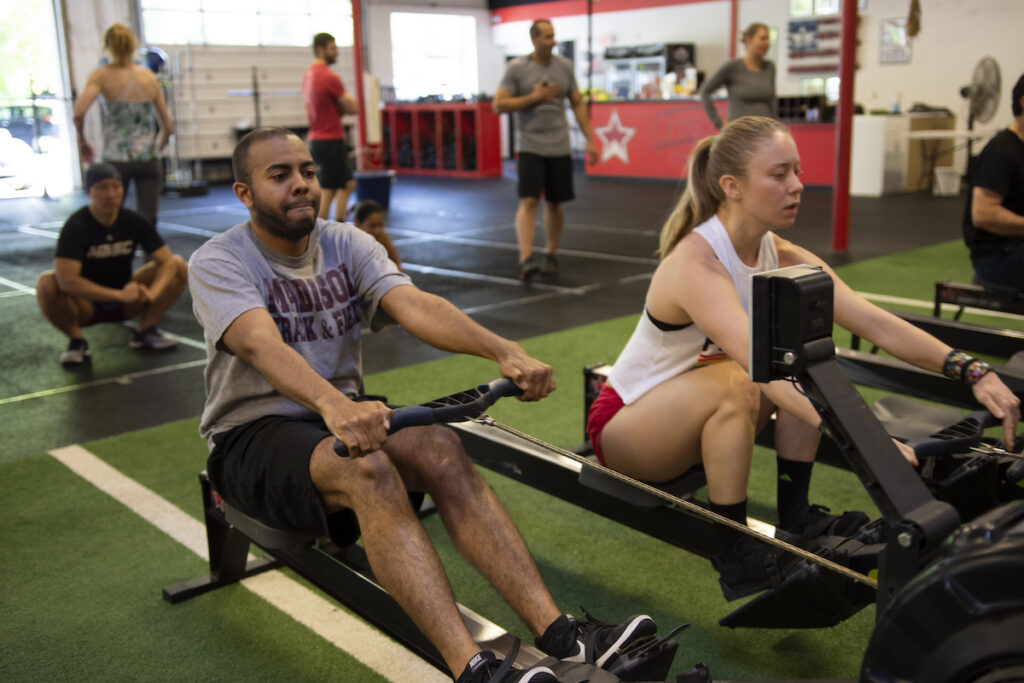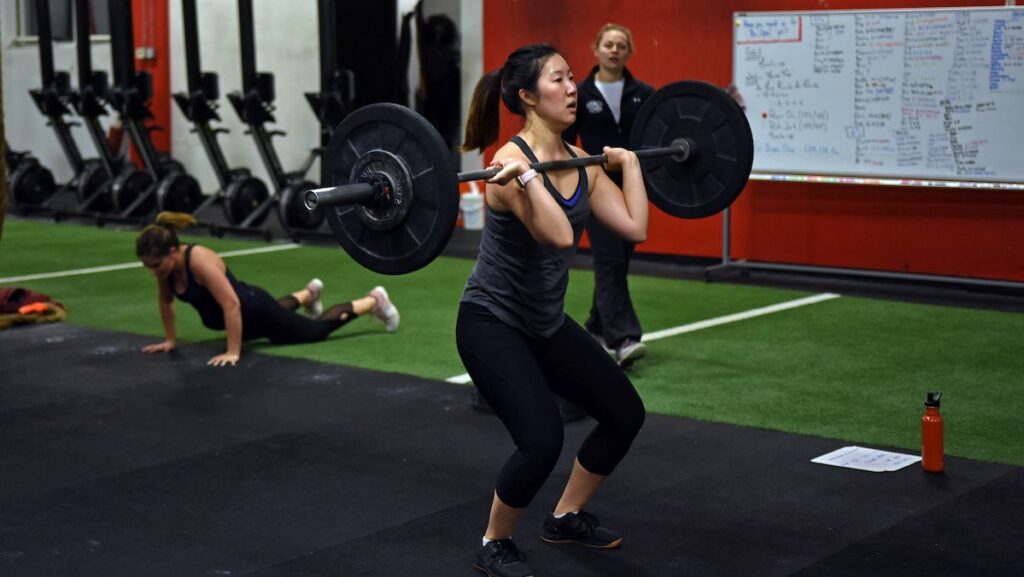Humans share a universal need to work toward something. When we are not stretched or reaching, we become bored, lost, uninterested. This is what brings so many of us to CrossFit: the physical and mental challenge. On a deep and primal level, we know that it’s through struggle that we grow, and the promise of that transformation is electrifying. We are most enriched and fulfilled when we are overcoming obstacles.
Our response to those obstacles dictates our progress in the gym, and this is where a common CrossFit story emerges as a major impediment to athletes: “I haven’t PR’d in two years.”

Training plateaus are not an “if,” but a “when,” and the mindset required to weather them is not something we’ve typically trained for. When we plateau, we engage in behaviors that extend them, and our relationship to the obstacle changes from enjoyment to frustration or despair. The good news is that this mindset is trainable, just like a squat. And like training squats, achieving this mindset requires us to first know what our weaknesses are so that we can address them with focus and clarity.
There are three common behavior patterns that emerge in CrossFit athletes who see their progress stagnating:
- The first is jumping from program to program. Athletes who switch training focuses, nutrition protocols, and programming so frequently that no progress is made tend to believe that if what they’re doing isn’t working immediately, it must be wrong.
- The second is training more: more training sessions, more gymnastics work, more rowing, running, and accessory work. These athletes tend to believe that they must not be doing “enough” in order to make progress. The added training load results in reduced recovery, leading to burnout and overtraining injuries.
- The third is giving up. These athletes label themselves “not a runner” or “bad at snatching,” and will hold back in workouts or will cherry-pick.
Each of these patterns of self-sabotage have accompanying cognitive distortions that ride just under our consciousness, yet they are all rooted in one belief. We can say “trust the process” as much as we want, but if we’re engaging in these behaviors, we subconsciously expect our progress to be linear.
Why do we do this? Partly because this is how we’re taught the world works. Do the work, get the “A”/the college entry/the job/the relationship/the PR.

It’s also partly because CrossFit is data driven: measurable, observable, repeatable results tell us that our program works to improve overall health. This is a positive attribute of our training that can turn ugly. Focusing only on results creates a breeding ground for black and white thinking. We learn to assess our performances as either “bad” or “good,” and the assessment depends solely on the result, not on the effort put into overcoming the obstacle. When we only value our results, we need PRs in order to know that we’re progressing.
Overcoming obstacles and striving for improvement are what create mental and physical growth, but only when we have a process-based mindset. How do we teach ourselves to value effort over results and to stop self-sabotaging? By building perspective, patience, and positivity.
Perspective In Training
Perspective has two components: self-knowledge and an expansive view of the present moment. When we lack self-knowledge, we repeat our mistakes over and over again. When we lack an expansive view of the present moment, we lose focus on what we can control.
To build self-knowledge:
- Take up a journaling practice. Observe your inner athlete by writing down your unfiltered thoughts. Get your fears and doubts out on a page, and then observe them for what’s going on underneath the surface. What mistakes are you repeating and why?
- Notice when you’re tempted to switch programs again or add another training session or give up altogether. Choose to do the opposite, rather than repeating the mistakes of the past.
To build a more expansive view of your progress:
- Remind yourself: training sessions are not tests to pass or fail, they are opportunities to improve. Progress over perfection. If we got 1% better, that’s a productive training session.
- Seek professional guidance. What do your coaches think you need most? A deload week? Targeted accessory work?
Patience Through the Process

In our world, immediate gratification is everyday: we can stream, read, or learn anything we want with a touch of a button, we can buy something and have it arrive on our doorstep 2 hours later, we can contact anyone on the planet and receive a response within seconds. But we can’t select “Next Day Shipping ” on a PR or even track its arrival date. Our physical and mental selves are masterworks that will require years of craftsmanship.
To build patience:
- Notice when you find yourself frustrated, rushing, or overwhelmed. Take 5 deep breaths. Go for a walk. Creating space between what we feel and what we do is how we learn to respond rather than react.
- Bring more presence to your training sessions. So often, we’re distracted the entire time we’re training: we’re on our phones, we’re chatting or complaining, we’re changing the music. Presence allows us to hear our own thoughts, take ownership of them, and create a more potent mental space.
Positivity and Attitude
“I’ll never do it,” “I can’t do it,” “Why me?”
It’s easy to allow negativity to overtake us when we struggle, because we are wired to think negatively (this is called negativity bias).
To build positivity:
- Each day, write down everything that you did to bring you closer to your goals. A daily practice of reliving what effort we put into the day rewires our brains to think more positively.
- Replace expectation with gratitude. A training session laden with expectations, with “shoulds” and shaming self-talk like “don’t be a baby” lead to negative training experiences. Coaching ourselves into appreciating our effort fuels future effort.
There is a mental cost that accompanies results-based thinking. A string of “bad” training days translates into being a “bad” athlete.
When we don’t PR, we question whether we’re destined to be average, whether we’ll ever reach our goals. We turn to sabotaging behaviors because we need to prove to ourselves and our critics (real or imaginary), that we’re good enough. Subconsciously, we learn to use our performances as a measurement of our worth. Each time we “fail,” we confirm our deep and devastating self-doubt.
Our goal is not to remove self-doubt. When we’re facing a challenge, we’re facing uncertainty, and that means we will experience doubt, anxiety, or fear. The goal is to embrace our challenges, to face them with poise and intention, to see our plateaus as an opportunity to improve in ways we hadn’t expected.
Through developing perspective, patience, and positivity, we can return to enjoying the struggle, to being enriched and enlivened through the process of overcoming an obstacle. Physically and mentally, we’ll have unleashed our potential.
Featured image: TJ Danenza Photography